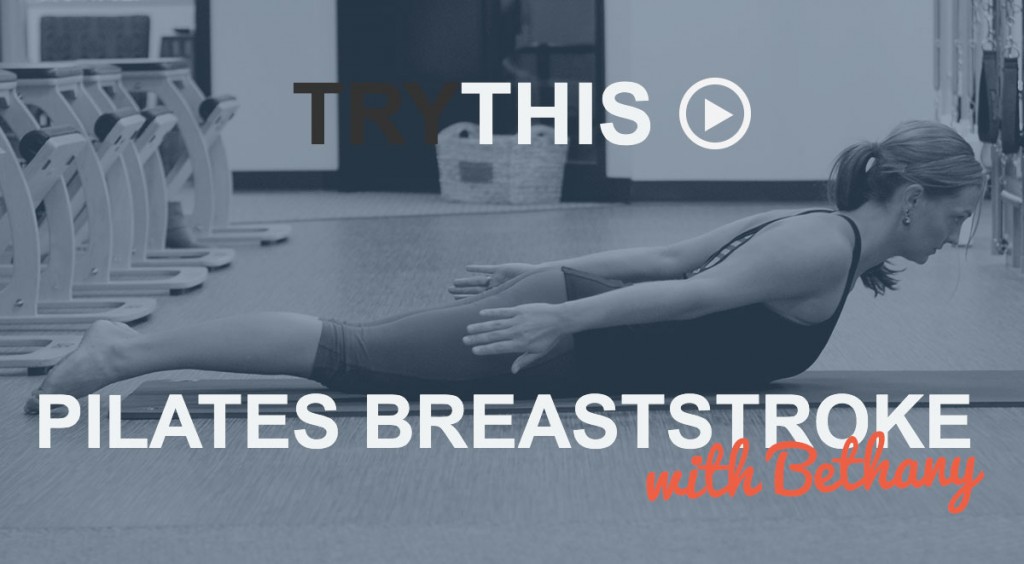Whether it’s on the mat or in straps on the reformer, I love to teach the Side Lying Legs sequence. These exercises work a variety of muscles; they target the small hip muscles that support and stabilize your hips and pelvis, as well as the hamstrings and back of the legs, your core and your obliques. They also help to tighten your butt and narrow through your hips (Who doesn’t want that!?) Trust me, these exercises are not called “Butt Busters” for nothing.
Category: Pilates Tips
Try This: The Hundred
The Hundred is a classic Pilates exercise; in fact, it’s the first in Joseph Pilates’s Mat Sequence. Truly, this is one of my favorite exercises that I love to teach in class, or even to do myself when taking a class! This versatile exercise can be done on the Mat, Reformer, Tower and the Chair, and I just love how it engages the core and challenges us to execute it correctly every time.
Try This: Pilates Breaststroke

No swim cap necessary
The breaststroke exercise is my absolute favorite Pilates exercise to teach. In fact, if I could pick one exercise from the Pilates repertoire to practice for the rest of my life, this one would be my “main squeeze.”
Here’s why: we are all slouchers. I know, I know, you’ve heard it before—but it’s true! We often initiate movement from the lumbar spine, which really should be more of a stabilizer, instead of the mid to upper back, which is where we should be getting most of our movement from. When our upper back becomes over kyphotic (rounded forward) it becomes both stiff and weak, wreaking havoc on our spine and neck.
The good news is that you can work to correct poor posture and its accompanying pain through Pilates!
Try This: How to do a BOSU® Ball Squat
I love squats! (Those of you who take my Run Fusion already know that, because we do a LOT of them.) There are so many different varieties and athletes can continue to challenge themselves by adding variation.
Why you should be doing BOSU ball squats
Walking squats, single leg squats, or squatting on an unstable surface can help add core, hip, glute and foot strength.
Work on a proper squat form in place, then try walking it. Finally, give the BOSU ball a try.
Try This: How to Do a Bridge
If your spine is inflexibly stiff at 30, you are old; if it is completely flexible at 60, you are young.
—Joseph Pilates
Whether you’re pushing and strengthening your body while working out, or compressing your vertebrae while at work, you’re constantly putting stress on your body throughout the day. The bridge articulation helps to unload the spine by enabling the segmental, fluid movement that can help the muscles move more freely.
Why you should be doing Pilates bridges
- To open up and facilitate articulation and mobility through the vertebrae of your spine
- To loosen up tight back muscles
- Breath facilitates movement to stimulate blood flow
